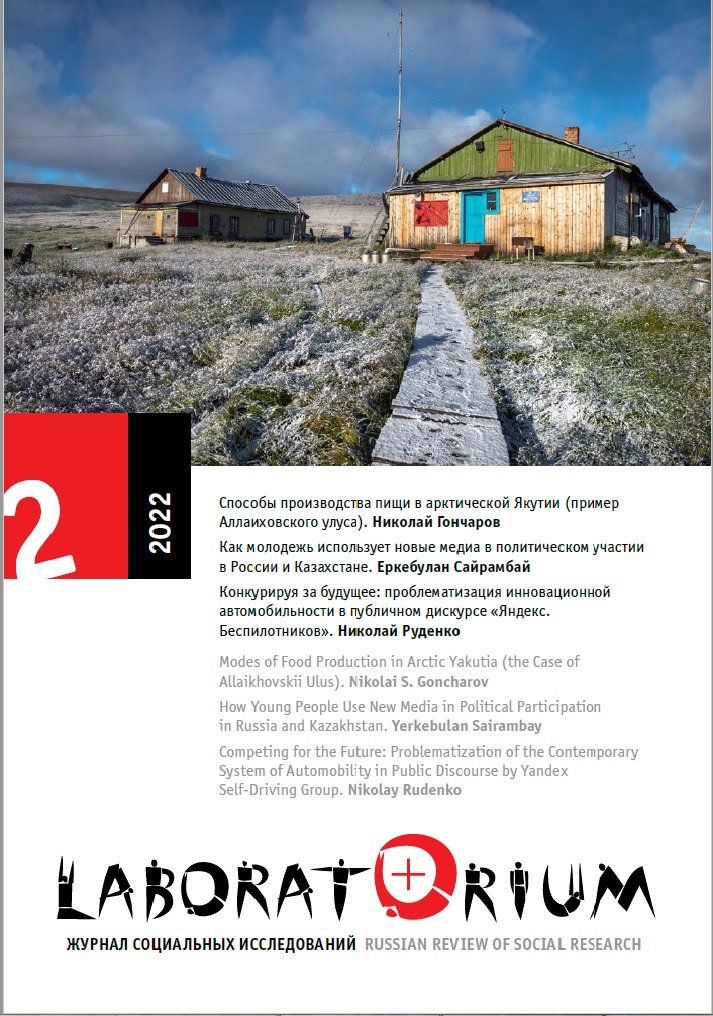Modes of Food Production in Arctic Yakutia (the Case of Allaikhovskii Ulus)
Main Article Content
Abstract
Using assemblage theory, this article, based on field work conducted in the Allaikhovskii Ulus (district) of the Republic of Sakha (Yakutia) in 2019, describes how the activities of local residents in food production change depending on different spatial conditions: in the village, at the “tundra dacha,” and in the fishing area. It investigates specific forms of “dwelling perspective assemblages” in different spatial contexts deploying theoretical tools developed by Tim Ingold and Manuel DeLanda. Food production is considered not as an isolated practice but as a result of a set of actions, material and social conditions in which the population of the Allaikhovskii Ulus lives. The processes of food production employ different modalities of the environment and include many components: from wood and metal to spirits and ritual actions. The question of the connection between different assemblages turned out to be significant. Empirical material shows that the isolation of assemblages is not always possible, and complete isolation is most likely impossible. The fewer resources, people, “delegates” to whom tasks are passed on, the less structured assemblages fill the space. Depending on the change in spatial conditions, such characteristics as “inflating the assemblage,” “shifting the center of the assemblage,” and “overlapping assemblages (intensification)” were identified. They reflect different strategies of food production. “Dwelling perspective assemblage” to some extent deprives a person of subjectivity; however, the actor does not disappear but expands and redefines themself. The actor stops being a figure separated from the processes taking place around them; subjectivity expands beyond the boundaries of the biological body and fixed objects. It fills and structures the space of relations that arise in the process of activity. Food is not only an act of consumption but is a complex of relationships in the environment; it is a metaobject, within which subjectivity/objectivity is in an elusive unity of intertwined processes.
Article in Russian
Keywords
Yakutia, Allaikhovskii ulus, Village, Tundra, Food Resources, Assemblages, Dwelling Perspective Assemblage
Abstract 264 | PDF (Русский) Downloads 221


